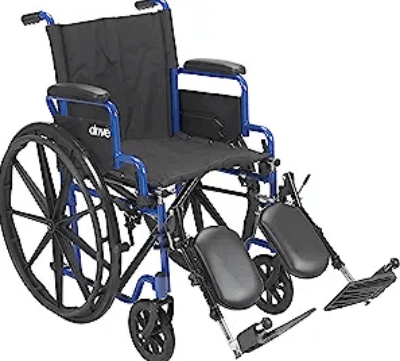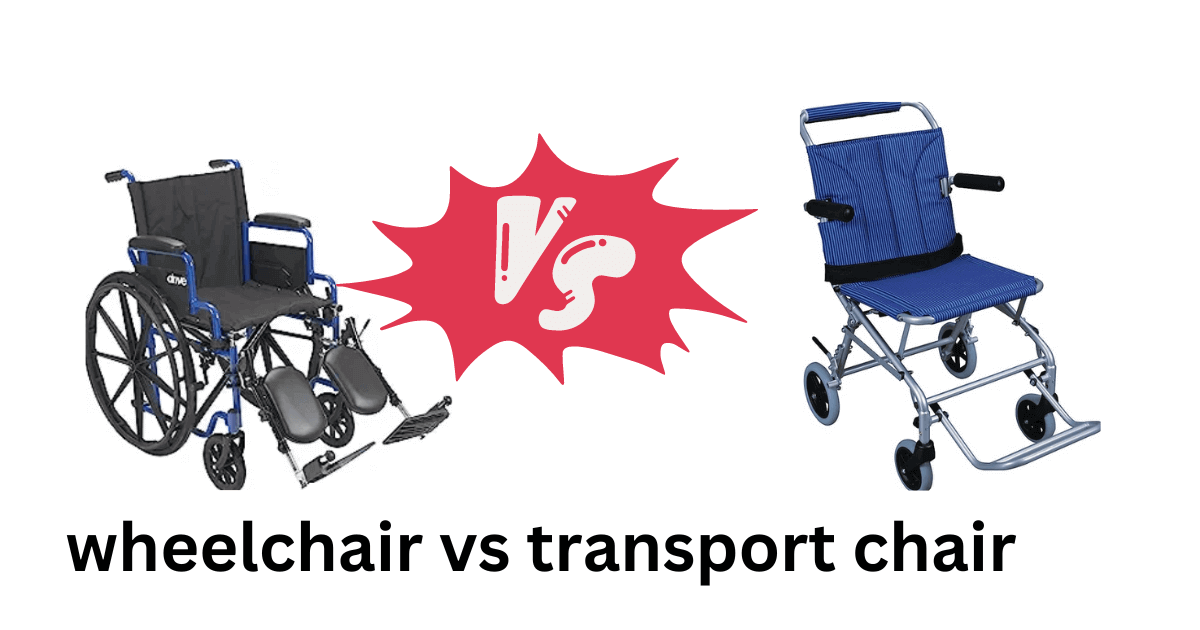When it comes to mobility aids, there are two popular options available: wheelchairs and transport chairs. While they serve a similar purpose, there are major differences between the two. Generally, wheelchairs are designed to be self-propelled by the user or pushed by a caregiver, while transport chairs are designed to be pushed by a caregiver.
Wheelchairs usually have larger rear wheels that allow the user to self-propel, while transport chairs have smaller rear wheels that make them easier to push. There are so many other differences as well that you should know!
In this article, we will explore wheelchair vs transport chair, enabling you to make a better decision based on your specific mobility needs.
Are you ready to dive into the key comparisons? If yes, then scroll ahead!
Wheelchairs and Transport Chairs
If you are at the stage where you have to decide whether you should invest in a wheelchair or a transport chair, then you must go through their differences in detail at least once.
Technically speaking, it is advised to invest in a chair that has a soft cushion, durable construction, and comfortable back support.
Let’s dive into the wheelchair vs transport chair details below!

Wheelchairs
1. What is the Definition of a Wheelchair?
Wheelchairs are mobility aids designed for individuals who require assistance with long-term mobility or have limited strength and balance. They are available in various models, including manual and electric-powered.
2. What are the General Features of a Wheelchair?
Wheelchairs typically feature large rear wheels that allow users to self-propel or can be pushed by a caregiver. They have a sturdy frame, comfortable seating, armrests, and footrests. Some models offer adjustable features, like customizable seat widths and heights.
3. How Wheelchairs Function?
Wheelchairs have two large rear wheels and two smaller front wheels, which allow the user to roll and steer the chair. The user can self-propel the chair by pushing on the large rear wheels or can be pushed by a caregiver. The chair also has a set of footrests or footplates that the user can rest their feet on and armrests that the user can use to support themselves or rest their arms.
Some wheelchairs also have additional features, such as adjustable backrests, leg rests, and headrests, which can be customized to fit the user’s individual needs.
Wheelchairs are suitable for individuals who require independent mobility or need the flexibility to navigate different terrains and environments. They offer greater control and maneuverability but may require more upper-body strength to self-propel.
4. What Needs to be Considered In a Wheelchair?
When considering a wheelchair, it’s important to consider the user’s needs and preferences. Some factors to consider include the user’s size and weight, their level of mobility, and any specific medical needs they may have.
It’s also necessary to consider the type of terrain the wheelchair will be used on, as some wheelchairs are better suited for indoor use while others are designed for outdoor use. Other factors to consider include the chair’s weight, ease of maneuverability, and adjustability. Also, it’s significant to consider the cost of the wheelchair and whether it fits within the user’s budget.
It’s also important to evaluate whether a manual or electric-powered wheelchair would better suit your specific needs and lifestyle.

Transport Chairs
1. What is the Definition of a Transport Chair?
Transport chairs, also known as companion chairs, are designed for short-term use or occasional transportation needs. They are often used when a caregiver or attendant is available to assist with mobility.
2. What are the General Features of A Transport Chair?
Transport chairs have smaller wheels and are generally lighter in weight compared to wheelchairs, making them easier to maneuver in tight spaces. They typically come with four small wheels, fixed armrests, and swing-away footrests. Some models may fold for easy transport and storage.
3. How A Transport Chair Function?
Transport chairs are ideal for individuals who are unable to self-propel or have limited upper body strength. They are primarily intended for use with a caregiver or attendant who pushes the chair. Transport chairs are commonly used in medical facilities, airports, and for short outings.
They have smaller rear wheels than a standard wheelchair, which makes them more compact and easier to maneuver in tight spaces. The user can sit on the chair and place their feet on the footrests or footplates.
The caregiver can then push the chair from behind using the handles on the back of the chair. Some transport chairs also have brakes that can be used to slow down or stop the chair, as well as seatbelts to keep the user securely in place.
4. What Needs to be Considered In a Transport Chair?
When selecting a transport chair, consider factors such as weight capacity, seat width, folding capability, and overall weight of the chair for ease of transport. It’s essential to assess the comfort and support provided by the seating and backrest, as well as the durability of the frame.
Key Differences Between Wheelchairs and Transport Chairs
Now, you are done with all the general details of both types of aided chairs. It’s time to compare them with each other. So don’t stop and scroll a bit to reach out for more information regarding wheelchair vs transport chair
1. Self-Propulsion
Wheelchairs allow for independent self-propulsion, while transport chairs require a caregiver or attendant to push the chair.
2. Terrain Adaptability
Wheelchairs are typically better suited for navigating various terrains, including outdoor surfaces, due to their larger wheels. Transport chairs are designed for smoother indoor surfaces and short-distance transportation.
3. Weight and Portability
Transport chairs are generally lighter in weight and more compact, making them easier to transport and store compared to wheelchairs.
4. Support and Comfort
Wheelchairs often offer more adjustable features, including customizable seating and cushioning, to provide individualized support and comfort. Transport chairs may have more limited customization options.
Conclusion
When it comes to choosing wheelchair vs transport chair, understanding the differences is key to selecting the right mobility aid for your needs. Wheelchairs offer greater independence, control, and versatility, making them suitable for long-term use and navigating various terrains. On the other hand, transport chairs are lightweight, compact, and designed for short-term use or occasional transportation needs. Hope this detailed difference will help you in the future to make the most suitable decision.
